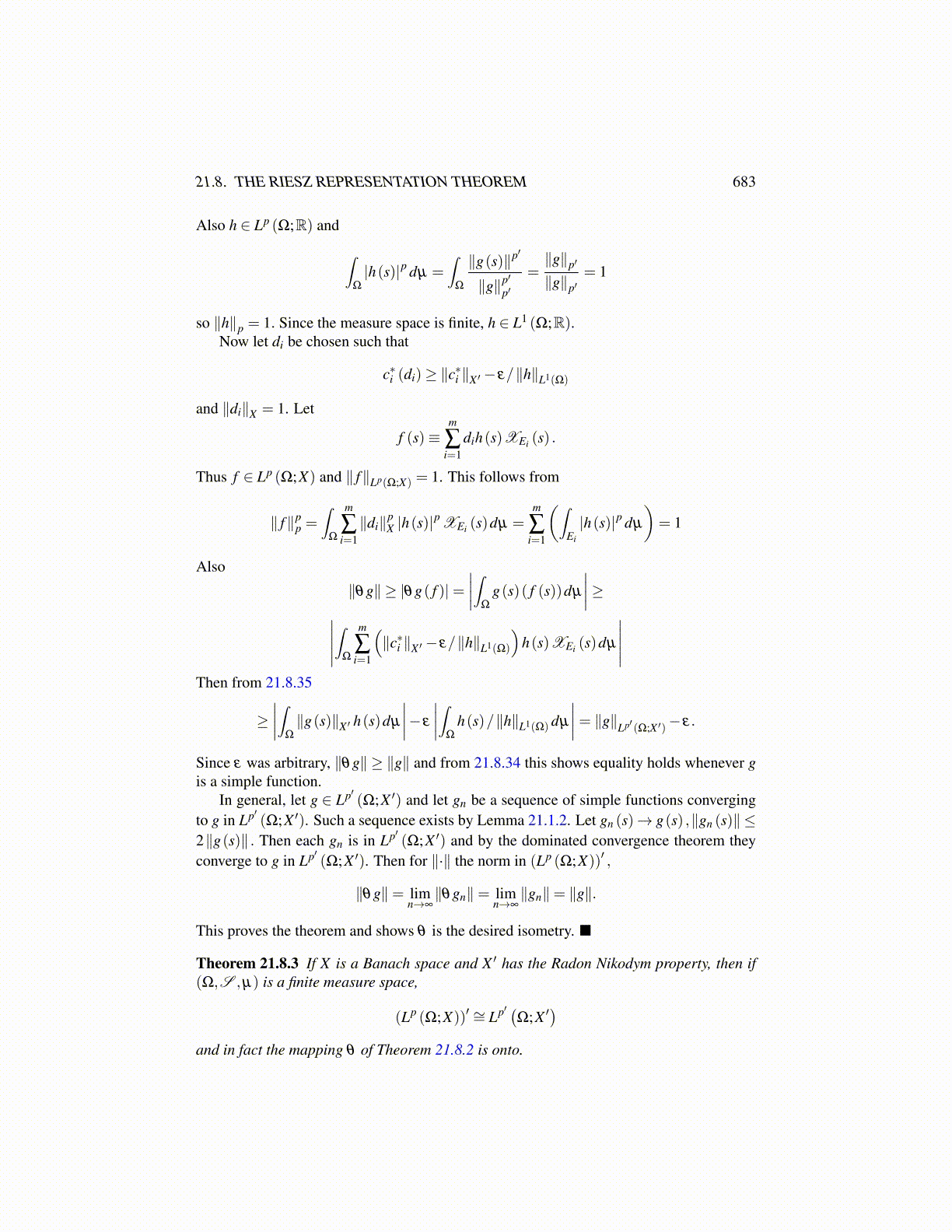
21.8. THE RIESZ REPRESENTATION THEOREM 683
Also h ∈ Lp (Ω;R) and
∫Ω
|h(s)|p dµ =∫
Ω
∥g(s)∥p′
∥g∥p′p′
=∥g∥p′
∥g∥p′= 1
so ∥h∥p = 1. Since the measure space is finite, h ∈ L1 (Ω;R).Now let di be chosen such that
c∗i (di)≥ ∥c∗i ∥X ′ − ε/∥h∥L1(Ω)
and ∥di∥X = 1. Let
f (s)≡m
∑i=1
dih(s)XEi (s) .
Thus f ∈ Lp (Ω;X) and ∥ f∥Lp(Ω;X) = 1. This follows from
∥ f∥pp =
∫Ω
m
∑i=1∥di∥p
X |h(s)|p XEi (s)dµ =
m
∑i=1
(∫Ei
|h(s)|p dµ
)= 1
Also
∥θg∥ ≥ |θg( f )|=∣∣∣∣∫
Ω
g(s)( f (s))dµ
∣∣∣∣≥∣∣∣∣∣∫
Ω
m
∑i=1
(∥c∗i ∥X ′ − ε/∥h∥L1(Ω)
)h(s)XEi (s)dµ
∣∣∣∣∣Then from 21.8.35
≥∣∣∣∣∫
Ω
∥g(s)∥X ′ h(s)dµ
∣∣∣∣− ε
∣∣∣∣∫Ω
h(s)/∥h∥L1(Ω) dµ
∣∣∣∣= ∥g∥Lp′ (Ω;X ′)− ε.
Since ε was arbitrary, ∥θg∥ ≥ ∥g∥ and from 21.8.34 this shows equality holds whenever gis a simple function.
In general, let g ∈ Lp′ (Ω;X ′) and let gn be a sequence of simple functions convergingto g in Lp′ (Ω;X ′). Such a sequence exists by Lemma 21.1.2. Let gn (s)→ g(s) ,∥gn (s)∥ ≤2∥g(s)∥ . Then each gn is in Lp′ (Ω;X ′) and by the dominated convergence theorem theyconverge to g in Lp′ (Ω;X ′). Then for ∥·∥ the norm in (Lp (Ω;X))′ ,
∥θg∥= limn→∞∥θgn∥= lim
n→∞∥gn∥= ∥g∥.
This proves the theorem and shows θ is the desired isometry.
Theorem 21.8.3 If X is a Banach space and X ′ has the Radon Nikodym property, then if(Ω,S ,µ) is a finite measure space,
(Lp (Ω;X))′ ∼= Lp′ (Ω;X ′
)and in fact the mapping θ of Theorem 21.8.2 is onto.